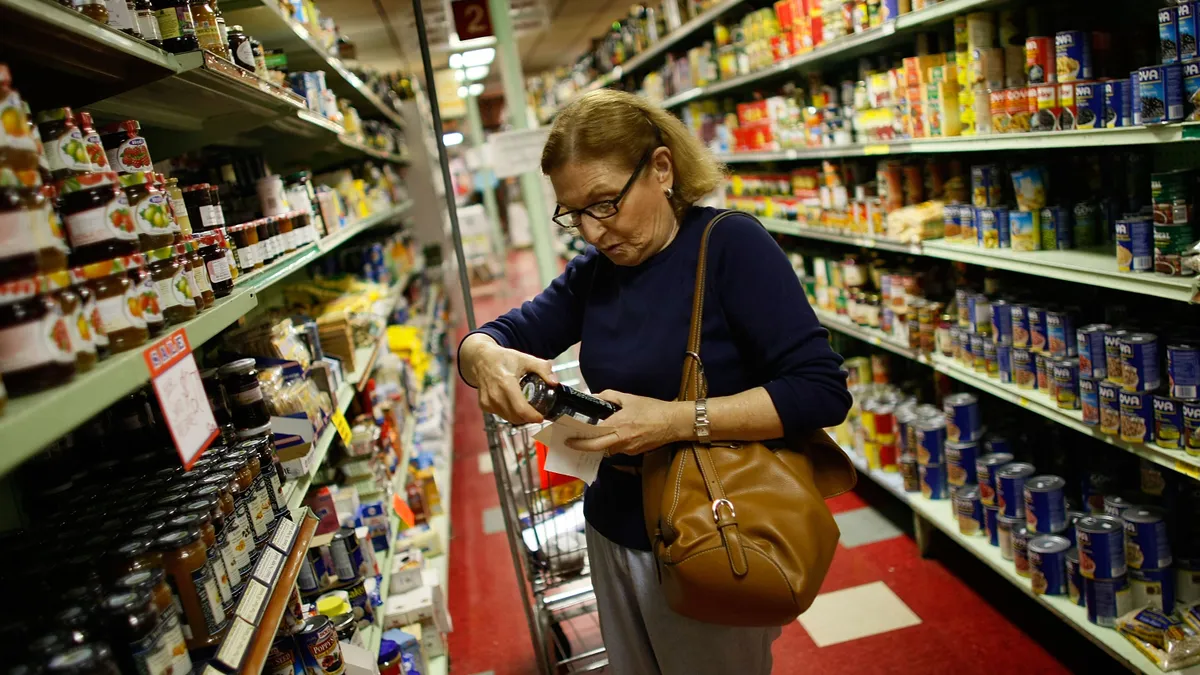Dive Brief:
- Federal Reserve policymakers are considering announcing a cut to stimulus Wednesday amid mounting signs of accelerating inflation, including a Labor Department report Tuesday that the producer price index surged 10% last month from the prior year.
- Consumer expectations for inflation one year ahead rose 6% in February compared with 5.8% the prior month, with the increase “widespread across age, education and income groups,” the New York Fed said. Policymakers track expectations for signs that inflation will become embedded in consumer and business behavior, putting at risk buying power and economic growth.
- “The greatest source of uncertainty is undoubtedly inflation and the potential impact of the Russian invasion of Ukraine,” according to Richard Curtin, chief economist for the University of Michigan survey of consumer sentiment. The most recent survey showed that year-ahead expectations for inflation rose this month to the highest level since 1981.
Dive Insight:
High inflation overturns an array of CFO planning — from pricing and wages to risk management and capital allocation — and ranks as the top challenge among small businesses, according to the National Federation of Independent Business.
In an effort to rein in price gains, Fed policymakers are widely expected to raise the federal funds rate by a quarter point at the end of a two-day meeting Wednesday. Fed Chair Jerome Powell in congressional testimony this month said he supported such an increase.
Powell faces a challenge of raising rates enough to curb the highest inflation in four decades but not so high that he undercuts employment or economic growth, economists said.
“The Fed is very late [to fight inflation] and has no good policy options available,” Allianz Chief Economic Adviser Mohamed El-Erian said Sunday on CBS’s “Face the Nation.”
“Inflation is high and will go higher because of what's happening in Ukraine,” El-Erian said, adding that the rapid rise in consumer prices may persist for 12 months and increase from 7.9% in February to more than 10%.
Powell needs “to make a choice: hit the brakes, regain credibility but risk a recession, or tap the brakes and we have an inflation problem going into next year,” El-Erian said. “He doesn’t have an easy decision.”
The Russian invasion of Ukraine has pushed up the price of oil, wheat and other commodities, fanning inflation fueled by robust demand, supply chain constraints and a tight labor market.
Treasury Secretary Janet Yellen also predicted price pressures will not ease anytime soon.
“We’re likely to see another year in which 12-month inflation numbers remain very uncomfortably high,” Yellen told CNBC’s “Closing Bell” on Thursday.
“We have seen a very meaningful increase in gas prices and my guess is that next month we’ll see further evidence of an impact on U.S. inflation from Putin’s war on Ukraine,” Yellen said. She served as Fed chair from 2014 until 2018.
To be sure, some economists predict price pressures this year will gradually wane.
“We are pretty confident now that the peak month-to-month increases in the core CPI [consumer price index] are in the past,” according to Ian Shepherdson, chief economist at Pantheon Macroeconomics, emphasizing a forecast that the price of vehicles will probably decline.
“For policymakers to be confident that inflation will revert to the [2%] target and stay there, they will also need to see clear evidence of easing supply pressure in the labor market — rising participation, slowing wage gains and stronger productivity growth — and in the goods supply chain,” Shepherdson said.













